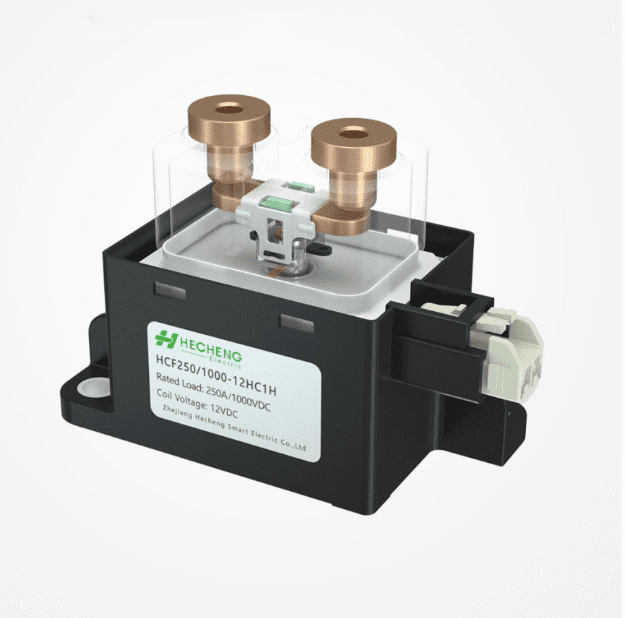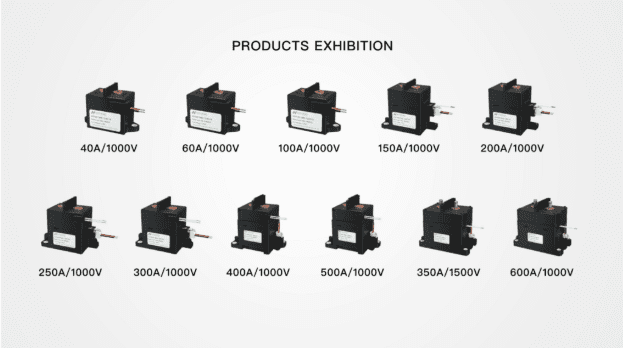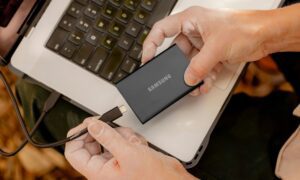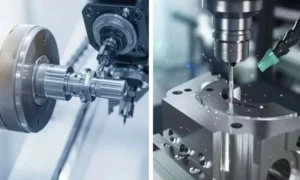A DC contactor is an essential electrical switch designed to control and manage direct current (DC) circuits safely and efficiently. Unlike typical AC contactors, it handles continuous DC flow, making it vital in applications like electric vehicles, battery storage, and solar power systems.
Core Components
- Electromagnetic system: The heart of a DC contactor, this system includes a coil that when energized creates a magnetic field.
- Coil and armature: The coil generates a magnetic force that pulls the armature, allowing mechanical movement.
- Contact system: Consists of the main contacts responsible for carrying the load current and auxiliary contacts for signaling or control.
- Arc extinguishing system: Specialized chambers and blowout coils control and dissipate electrical arcs formed when opening or closing the circuit.
- Blowout coils and chambers: These guide and suppress the arc by magnetic forces, protecting the contactor and ensuring longevity.
How Does a DC Contactor Work Step by Step
A DC contactor operates through a straightforward but effective mechanism designed to handle continuous DC current safely.
- Energizing Phase: When the coil receives power, it creates a magnetic field. This magnetic force pulls the armature, which closes the main contacts. This action allows current to flow through the contactor, powering your load.
- De-energizing Phase: When power to the coil is cut, a spring mechanism pushes the armature back to its original position, opening the contacts and stopping current flow. This quick action is crucial for safety and system protection.
- Arc Management: Because DC current doesn’t cross zero like AC, arcs can persist when contacts open. To handle this, magnetic blowout coils and arc extinguishing chambers work together to suppress arcs quickly. Advanced designs may use PWM (pulse width modulation) to hold the coil with less power, reducing heat and wear.
Advanced Features:
- Support for bidirectional current flow, important for energy storage and regenerative systems.
- Zero arc technology minimizes wear on contacts, extending contactor life.
- Built tough for vibration resistance and harsh environments, common in automotive and industrial settings.
Common Pitfalls to Avoid:
- Overheating caused by improper sizing of the contactor for your load.
- Using a contactor not rated for the required current or voltage can lead to premature failure.
HIITIO’s DC contactors are built to withstand over 500,000 cycles, offering durability and reliability you can count on for long-term use in demanding American markets.
Top Applications of DC Contactors in Modern Industries
DC contactors play a vital role across many sectors in the U.S., especially where reliable control of high voltage DC power is required.
Electric Vehicles and Battery Systems
From EVs and HEVs to battery isolation and charging stations, DC contactors ensure safe switching and battery management. HIITIO’s 1000V models are designed for these demanding environments, providing robust arc suppression and long cycle life.
Renewable Energy
Solar inverters, wind turbines, and battery energy storage systems (BESS) depend heavily on DC contactors to manage power flow efficiently. HIITIO’s contactors help maintain system stability and boost efficiency in these green energy setups.
Industrial and Rail Applications
Heavy-duty industrial DC motors, uninterruptible power supplies (UPS), and rail traction systems require contactors that can handle high currents and continuous operation. High voltage DC switching with magnetic blowout features makes HIITIO contactors ideal for these uses.
Emerging Technologies
The rise of 48V start-stop systems in vehicles and fuel cells demand contactors that are compact, reliable, and capable of bidirectional DC current flow. HIITIO provides specialized solutions that match these evolving needs.
How to Select the Right DC Contactor A Buyers Checklist
Choosing the right DC contactor is crucial for reliable and safe operation, especially in demanding US industries like EVs, solar, and industrial power systems. Here’s a quick checklist to help you pick the right one:
Key factors to consider
- Voltage and current ratings: Make sure the contactor handles your system’s max voltage—from 12V up to 1500V—and current load, often between 50A and 1500A.
- Lifecycle: Look for a contactor rated for at least 100,000 operations to ensure long-term durability. HIITIO offers models built to handle even more cycles for demanding applications.
- Environmental protection: If your system runs outdoors, verify it has proper seals and ratings like IP67 to resist dust and water.
Sizing guide
- Match your contactor’s current rating to your continuous load.
- Account for inrush current by sizing for at least twice the normal operating current. This helps prevent overheating and premature failure.
Maintenance tips
- Perform quarterly inspections to check connections, contacts, and coil operation.
- Consider HIITIO’s zero-maintenance DC contactors, designed with hybrids and magnetic blowout technology for minimal upkeep.
By following this checklist, you can confidently select a high voltage DC contactor that fits your application, ensures safety, and reduces downtime.
Why HIITIO Stands Out as Your High Voltage DC Contactor Partner
Ready to upgrade your system with proven high voltage DC contactors? HIITIO delivers industry-leading solutions designed for EVs, renewable energy, and industrial applications. With models tested to over 500,000 cycles, certified safety standards, and customizable options, HIITIO ensures your projects achieve maximum reliability and efficiency. Explore our product range today and partner with HIITIO for the next generation of DC power solutions.




































